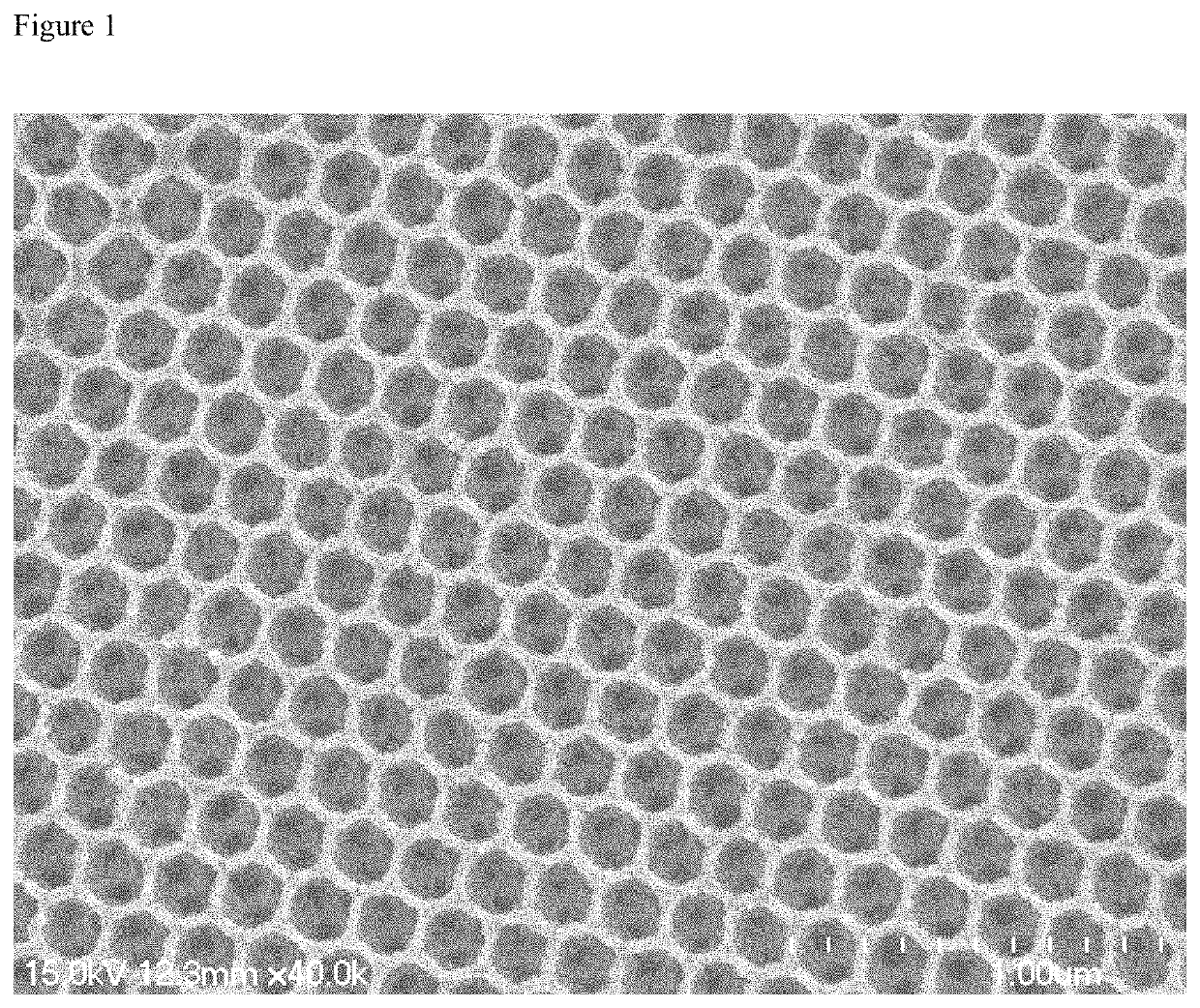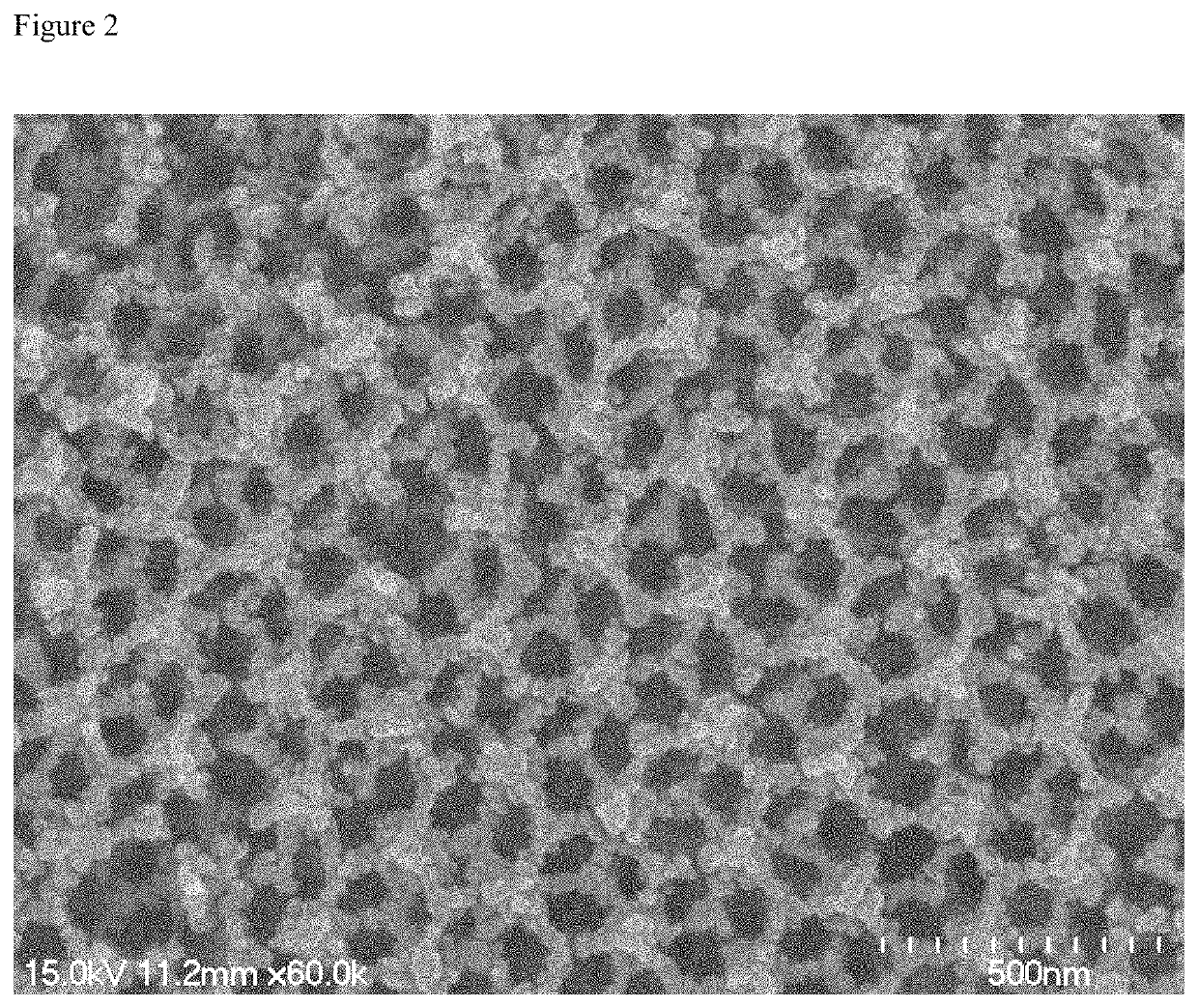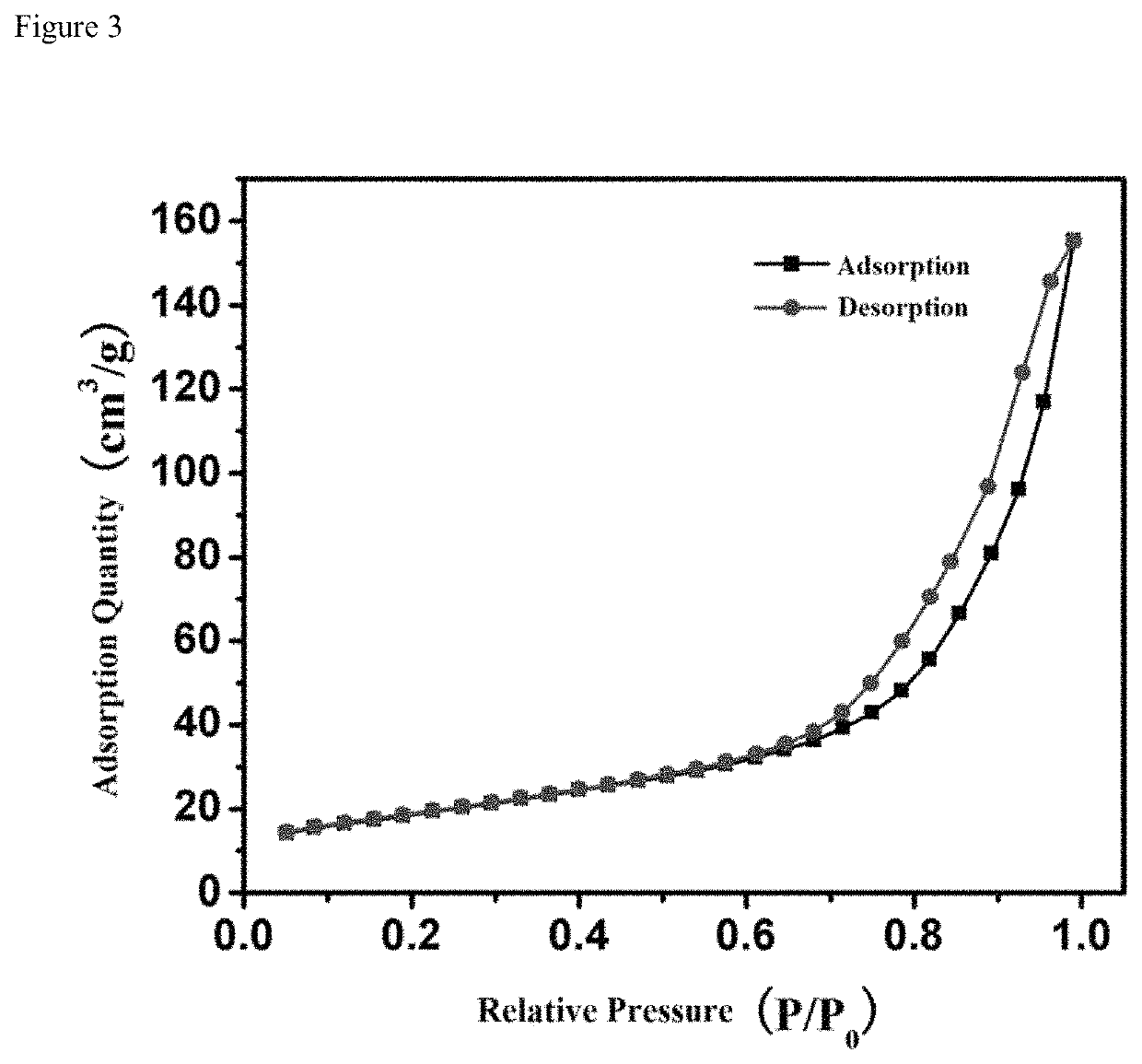Inverse opal material for visible-light driven photocatalytic degradation of organic pollutants, and preparation method thereof
a technology of organic pollutants and inverse opal, which is applied in the direction of catalyst activation/preparation, polycrystalline material growth, physical/chemical process catalysts, etc., can solve the problems of dye wastewater seriously endangering the water environment, 12% of dyes used are lost in processing and handling operations, and poor mass transfer performance, etc., to facilitate the diffusion of reactants and large surface area
- Summary
- Abstract
- Description
- Claims
- Application Information
AI Technical Summary
Benefits of technology
Problems solved by technology
Method used
Image
Examples
embodiment 1
Nitrogen-Doped TiO2 Inverse Opal (N—TiO2 IO)
[0026]0.25 g diethanolamine was dissolved in 15 g anhydrous ethanol, followed by continuous stirring for 20 min. Then, 0.5 g tetrabutyl titanate was added to the mixture, and the mixture was indexed as A solution. Subsequently, 0.29 g urea was added to 30 mL anhydrous ethanol, and the solution was denoted as B solution. Then, 1 mL A solution and 1 mL B solution were mixed homogeneously. The PS opals were immersed into the mixed solution and dried at 60° C. Finally, the PS templates were removed via calcination in air at 500° C. at a heating rate of 1° C. min−1 for 2 h, and N—TiO2 IO was obtained.
embodiment 2
Nitrogen-Doped TiO2 Inverse Opal (N—TiO2 IO)
[0027]0.125 g acetylacetone was dissolved in 17.5 g anhydrous ethanol, followed by continuous stirring for 10 min. Then, 0.5 g tetrabutyl titanate was added to the mixture, and the mixture was indexed as A solution. Subsequently, 0.29 g urea was added to 30 mL anhydrous ethanol, and the solution was denoted as B solution. Then, 1 mL A solution and 1 mL B solution were mixed homogeneously. The PS opals were immersed into the mixed solution and dried at 60° C. Finally, the PS templates were removed via calcination in air at 500° C. at a heating rate of 1° C. min−1 for 2 h, and N—TiO2 IO was obtained. As can be seen in FIG. 1, N—TiO2 IO presents a face centered cubic arrangement with uniform pores.
embodiment 3
Nitrogen-Doped and CdSe-Sensitized TiO2 Inverse Opal (CdSe / N—TiO2 IO)
[0028]0.1830 g CdCl2, 0.0796 g Se and 0.2520 g Na2SO3 were added to 35 mL deionized water. After vigorously stirring at 3000 rpm, the suspension was transferred into a 50 mL Teflon-lined stainless-steel autoclave along with 20 mg N—TiO2 IO. The autoclave was heated to 180° C. for 8 h. After naturally cooling to room temperature, the FTO glass coated with N-doped and CdSe-sensitized TiO2 inverse opals (CdSe / N—TiO2 IO) was collected and washed with deionized water. As can be seen in FIG. 2, well-ordered inverse opals were retained after the hydrothermal process and a homogeneous coverage of CdSe can be observed without pore clogging. As can be seen in FIG. 3, the isotherms are identified as type III isotherms. The adsorption quantity is low in low specific pressure region, and the higher the relative pressure, the more adsorption quantity.
PUM
| Property | Measurement | Unit |
|---|---|---|
| particle size | aaaaa | aaaaa |
| temperature | aaaaa | aaaaa |
| temperature | aaaaa | aaaaa |
Abstract
Description
Claims
Application Information
 Login to View More
Login to View More - R&D
- Intellectual Property
- Life Sciences
- Materials
- Tech Scout
- Unparalleled Data Quality
- Higher Quality Content
- 60% Fewer Hallucinations
Browse by: Latest US Patents, China's latest patents, Technical Efficacy Thesaurus, Application Domain, Technology Topic, Popular Technical Reports.
© 2025 PatSnap. All rights reserved.Legal|Privacy policy|Modern Slavery Act Transparency Statement|Sitemap|About US| Contact US: help@patsnap.com



